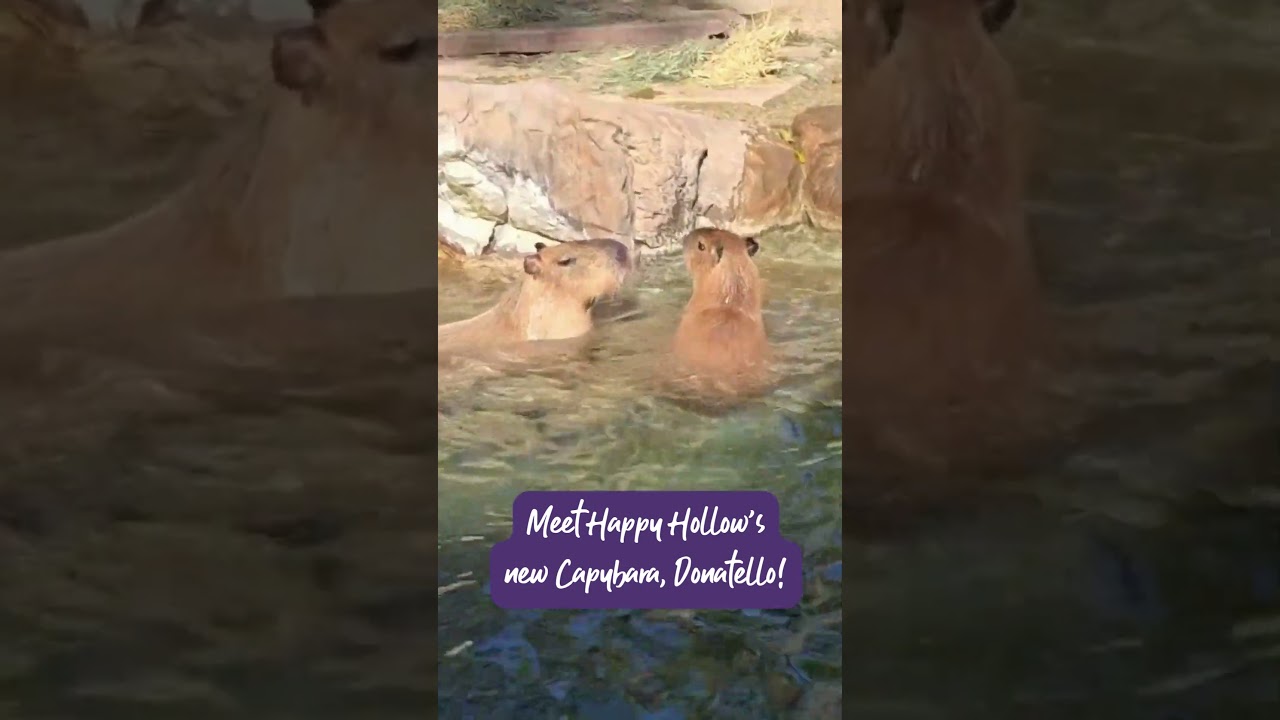- Introduction to Donatello the Capybara and its significance in zoology and conservation efforts.
- Detailed characteristics of capybaras, focusing on their behavior, habitat, and physiological adaptations.
- The role of zoos in wildlife conservation, particularly with capybaras, including breeding programs and education.
- Challenges faced in capybara conservation and management.
- Ways the public can contribute to capybara conservation and general wildlife stewardship.
Introducing Donatello the Capybara offers an exciting opportunity to delve into the wonders of this fascinating species. As the largest living rodent, capybaras (Hydrochoerus hydrochaeris) captivate interest with their unique behavioral traits and ecological roles. Donatello, an ambassador for his species, plays a pivotal part in educating the public on the importance of wildlife conservation.
Characteristics of Capybaras
Capybaras exhibit intriguing behaviors and adaptations that make them successful survivors in diverse ecosystems. Typically inhabiting areas near bodies of water, such as rivers, lakes, and wetlands, they have evolved as semi-aquatic mammals. Their webbed feet and hydrodynamic body shape are perfect for navigating both land and water environments. Moreover, their ability to stay submerged for up to five minutes helps avoid predators.
Capybaras are highly social creatures, often found in groups of 10 to 20 individuals. This social structure enhances their capacity to evade predators, like jaguars and anacondas, by allowing them to organize lookout roles and communicate danger quickly. Their vocal communication, ranging from purrs to barks, plays a vital role in maintaining group cohesion.
Physiologically, capybaras have a high capacity for digesting cellulose, facilitated by their specialized cecum. This adaptation enables them to extract maximum nutrients from their primarily herbivorous diet. Additionally, capybaras possess remarkable dental adaptations; their teeth grow continuously, which aids in coping with their abrasive diet.
Role of Zoos and Conservation Efforts
Zoos are critical in the global mission of wildlife conservation. For species like the capybara, which may not always take the spotlight in conservation, zoos provide an essential platform for education and breeding programs. By featuring animals like Donatello, zoos highlight lesser-known species and their ecological importance.
Breeding programs within zoos are designed to bolster genetic diversity. By monitoring and managing breeding efforts, zoologists help maintain healthy populations that can serve as a genetic reservoir for future wild populations. This strategy is vital for capybaras, whose natural habitats are under increasing threat from human activities.
Education is another cornerstone of zoo conservation efforts. Donatello serves as an educational ambassador, helping visitors—from schoolchildren to scientists alike—understand the intricate balance between species and their environments. Interactive sessions and educational displays around capybaras can foster a deeper appreciation and respect for these creatures, encouraging public support for broader conservation initiatives.
Challenges in Capybara Conservation and Management
Despite these concerted efforts, challenges in capybara conservation persist. Habitat loss remains a significant threat, driven largely by agriculture, urban expansion, and deforestation. This habitat disruption not only reduces the space available for capybaras but also affects the ecosystems they support.
Furthermore, illegal hunting poses another peril. Though capybaras are hunted for their meat and hide in certain areas, overhunting can destabilize populations and lead to the loss of this key species. Wildlife management strategies must incorporate enhanced protection measures to combat poaching and illegitimate trade.
Climate change presents a burgeoning challenge by altering habitats and impacting the availability of water resources. As temperatures rise and rainfall patterns shift, capybaras might struggle to adapt to new conditions, threatening their survival.
Public Involvement in Capybara Conservation
Individual action can significantly impact capybara conservation and broader wildlife preservation. Supporting local and global conservation organizations helps fund critical research and protection efforts. Similarly, raising awareness through social media and community engagement can elevate the importance of species like the capybara in the public eye.
Participating in citizen science projects or local conservation initiatives allows individuals to gain hands-on experience and contribute data that aids scientific study. Additionally, advocating for sustainable practices and responsible land use in local communities can help mitigate habitat loss and promote biodiversity.
Adopting eco-friendly habits reduces humans’ ecological footprint, benefiting countless species, including capybaras. Simple actions such as reducing water consumption, supporting sustainable agriculture, and minimizing waste all play a role in fostering a healthier planet for capybaras and other wildlife.
Ultimately, the introduction of Donatello the Capybara brings more than just a new resident at a zoo. It highlights an ambassadorial presence that enriches our understanding of the natural world and amplifies our role in conservation. By embracing and supporting conservation efforts, we ensure that species like Donatello continue to thrive and captivate future generations.
*****
Source Description
Come on, get Capy! There’s a new capybara at Happy Hollow and he’s named after a certain pizza-loving reptile with a shell 🥷🐢 Learn more about Donatello the capybara by reading the full blog post at happyhollow.org/happy-hollow-blog/new-capybara-donatello/ 💛 Buy your ticket to see Donatello and Wendy today!


